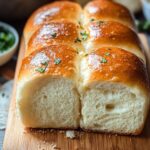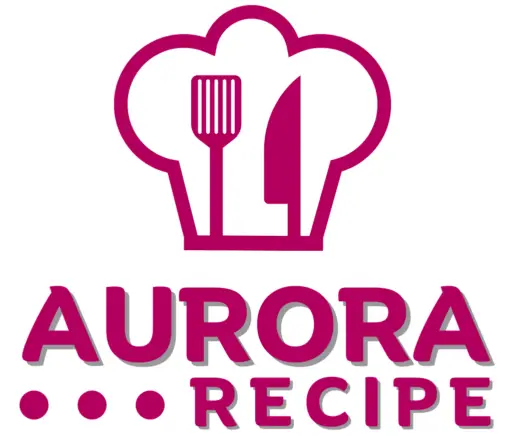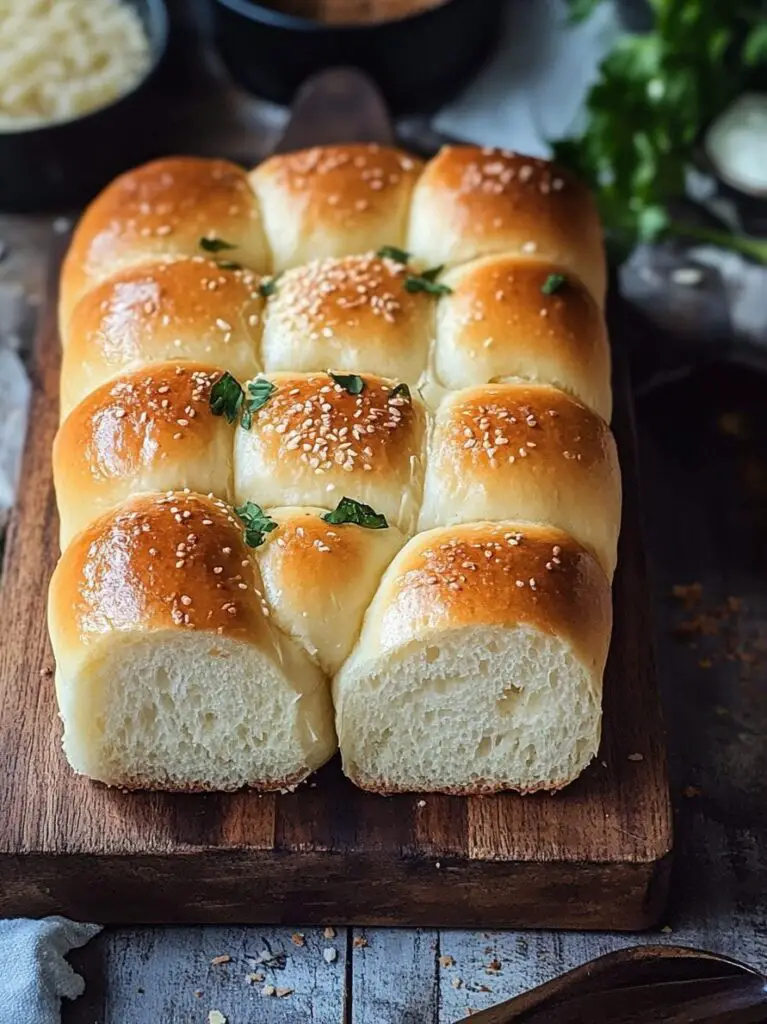This Vegan Pav Bread recipe showcases the art of plant-based baking, offering soft, fluffy rolls with a golden crust. Perfect for pairing with curries, sweet jams, or savory accompaniments, this bread is a versatile and cherished addition to any meal. By swapping traditional dairy ingredients with plant-based alternatives, you can enjoy this delightful dish while embracing a more sustainable and compassionate lifestyle.
Ingredients
- 2 cups all-purpose flour
- 1 tsp salt
- 2 tbsp sugar
- 2 1/4 tsp active dry yeast (1 packet)
- 1/2 cup warm water (110°F to 115°F)
- 1/4 cup unsweetened almond milk or soy milk, lukewarm
- 2 tbsp olive oil or melted coconut oil
- Additional oil for greasing
Directions
- Activate the Yeast:
Dissolve sugar in warm water, add yeast, and let it sit until frothy (about 5 minutes). - Mix the Dough:
In a large bowl, combine flour and salt. Add the yeast mixture, lukewarm milk, and oil. Mix until a dough forms. - Knead the Dough:
Transfer the dough to a floured surface and knead for 8-10 minutes until smooth and elastic. Place the dough in a greased bowl, cover, and let it rise in a warm place until doubled in size (about 1 hour). - Shape and Proof:
Divide the dough into 8 equal pieces and shape them into balls. Place them on a greased baking tray, spaced slightly apart. Cover and let them rise again for 30-40 minutes. - Bake:
Preheat the oven to 375°F (190°C). Bake the pav bread for 15-20 minutes, or until golden brown. - Finish:
Brush the baked bread with a small amount of oil for a glossy finish. Allow to cool slightly before serving.
Nutritional Information
- Calories: 180 kcal per serving
- Serving Size: 1 piece
- Servings: 8
Enjoy this simple and elegant vegan bread, a delightful addition to your plant-based repertoire!
The Art of Vegan Pav Bread: A Plant-Based Marvel
Bread is often considered the soul of a meal, and Vegan Pav Bread is no exception. This delightful recipe elevates traditional dinner rolls into an artful culinary experience, offering a compassionate and sustainable alternative to dairy-laden bread. Whether you’re vegan, curious about plant-based eating, or simply love baking, this recipe is a wonderful addition to your kitchen repertoire.
The versatility and simplicity of pav bread make it a popular choice across various cuisines. Originating from the streets of India, pav bread is often associated with dishes like pav bhaji, vada pav, and misal pav. However, its appeal transcends these traditional pairings, as it also complements a variety of global flavors. By transforming this classic bread into a vegan-friendly version, we preserve its essence while aligning with the principles of mindful eating.
A Testament to Plant-Based Baking
The beauty of vegan pav bread lies in its simplicity. By replacing traditional dairy ingredients such as butter and milk with plant-based alternatives like almond milk and olive oil, we retain the rich texture and taste of the original recipe. The result is a loaf that is soft, fluffy, and enriched with a subtle nutty flavor. Baking without dairy may seem daunting, but this recipe proves that plant-based options can be equally—if not more—delicious.
The process begins with a classic bread-making ritual: activating the yeast. This crucial step is a gentle reminder of the science behind baking, as the yeast ferments, creating the air bubbles that make the bread rise. The dough, a harmonious blend of flour, salt, plant milk, and oil, transforms under the warmth of human hands during the kneading process. It’s here that gluten develops, ensuring the bread achieves its iconic elasticity.
Why Vegan Pav Bread Stands Out
- Health Benefits: The recipe eliminates cholesterol and reduces saturated fat by using plant-based oils instead of butter. Almond or soy milk offers additional nutrients, making the bread a healthier alternative.
- Sustainability: Choosing plant-based ingredients minimizes environmental impact. Dairy farming is resource-intensive, contributing to greenhouse gas emissions and water use. Opting for vegan pav bread is a small yet impactful step toward sustainability.
- Versatility: This bread pairs with everything from spicy curries and tangy chutneys to sweet jams and creamy spreads. It can be a comforting breakfast, a satisfying snack, or an elegant dinner side.
- Inclusive Diet: Vegan pav bread accommodates various dietary needs, making it ideal for gatherings with diverse guests. It’s dairy-free, nut-free (if desired), and customizable with gluten-free flours for those with gluten sensitivities.
The Heartwarming Ritual of Baking
Making pav bread is more than just preparing food; it’s a meditative process. The tactile experience of kneading dough, watching it rise, and witnessing it bake to golden perfection creates a connection to the craft of baking. The aroma of freshly baked bread is unmatched, filling your kitchen with a comforting warmth that invites everyone to the table.
The final result is rewarding in every sense. The golden-brown crust offers a satisfying crunch, while the pillowy interior is perfect for soaking up flavors. A light brush of oil after baking adds a glossy finish, elevating its visual appeal.
Perfect Pairings for Vegan Pav Bread
The soft texture and neutral flavor of pav bread make it an excellent companion for various dishes. Here are a few suggestions to inspire your next meal:
- Indian Curries: Traditional pav bhaji, a spiced vegetable mash, is a quintessential pairing.
- Western Favorites: Use the bread as a base for sliders or mini sandwiches, layered with plant-based patties, fresh vegetables, and vegan cheese.
- Breakfast Spread: Toast and enjoy with nut butter, fruit preserves, or a drizzle of agave syrup.
- Soup Sidekick: Dip it into creamy soups like tomato bisque or lentil stew for a comforting meal.
Embracing Plant-Based Living Through Bread
Vegan pav bread is more than just a recipe; it’s a symbol of how plant-based eating can honor culinary traditions while promoting compassion. In a world where dietary choices have significant ethical and environmental implications, recipes like this pave the way for a brighter future. By making small changes—such as swapping dairy for plant-based milk—we contribute to a collective shift toward sustainability.
Conclusion: A Bread for All Seasons
Whether you’re an experienced baker or a novice in the kitchen, vegan pav bread is a recipe that promises success and satisfaction. Its soft texture, golden crust, and versatility make it a staple for any occasion. Moreover, the plant-based ingredients align with a lifestyle that values health, sustainability, and inclusivity.
Incorporating recipes like vegan pav bread into your culinary journey is a step toward celebrating food in its most ethical and nourishing form. Every loaf baked and every meal shared becomes a testament to the possibilities of plant-based living. So, gather your ingredients, embrace the joy of baking, and let the magic of vegan pav bread bring warmth to your table.
Print
Vegan Pav Bread
Description
This Vegan Pav Bread recipe showcases the art of plant-based baking, offering soft, fluffy rolls with a golden crust. Perfect for pairing with curries, sweet jams, or savory accompaniments, this bread is a versatile and cherished addition to any meal. By swapping traditional dairy ingredients with plant-based alternatives, you can enjoy this delightful dish while embracing a more sustainable and compassionate lifestyle.
Ingredients
- 2 cups all-purpose flour
- 1 tsp salt
- 2 tbsp sugar
- 2 1/4 tsp active dry yeast (1 packet)
- 1/2 cup warm water (110°F to 115°F)
- 1/4 cup unsweetened almond milk or soy milk, lukewarm
- 2 tbsp olive oil or melted coconut oil
- Additional oil for greasing
Instructions
- Activate the Yeast:
Dissolve sugar in warm water, add yeast, and let it sit until frothy (about 5 minutes). - Mix the Dough:
In a large bowl, combine flour and salt. Add the yeast mixture, lukewarm milk, and oil. Mix until a dough forms. - Knead the Dough:
Transfer the dough to a floured surface and knead for 8-10 minutes until smooth and elastic. Place the dough in a greased bowl, cover, and let it rise in a warm place until doubled in size (about 1 hour). - Shape and Proof:
Divide the dough into 8 equal pieces and shape them into balls. Place them on a greased baking tray, spaced slightly apart. Cover and let them rise again for 30-40 minutes. - Bake:
Preheat the oven to 375°F (190°C). Bake the pav bread for 15-20 minutes, or until golden brown. - Finish:
Brush the baked bread with a small amount of oil for a glossy finish. Allow to cool slightly before serving.







